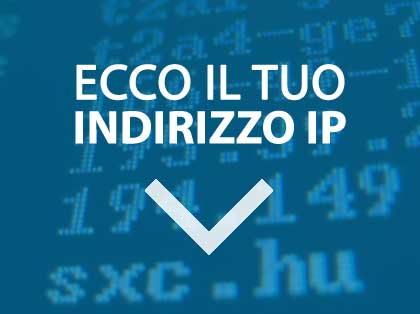More times you will be asked How do I see my IP address? And then you will ask but my IP is public or private? And once you find the ip address is located at where the map is, here you can see the IP geolocation of your computer connected to the internet, see if your IP address is static or dynamic or follow the guide that allows you to change quickly Your private IP in a few steps.

As soon as you log in to this page we found your IP address, look in the table below. You will find your host name, provider name, city, and country.
[show_my_ip_data]
Indice
What is my IP?
IP Address is the acronym for Internet Protocol Address. It is an identifier for a computer or device on a network TCP / IP. Networks using TCP / IP routing messages based on the target IP. Contrary to IP, specify the format of packets, also called datagrams. We recommend reading the exact definition on wikipedia.
The format of an IP address is a 32-bit numeric address written as four dot-separated numbers. Each number can be zero to 255. An example of IP is: 1.160.10.240. In an isolated network, you can assign IP addresses randomly as long as each one is unique. However, connecting a private network to the Internet requires the use of registered IP addresses (called Internet addresses) to avoid duplicates.
Find your IP address
To find and identify an IP address, you can now use dedicated tools that allow you to have detailed information about the owner of an IP address or a web domain through whois. You can click here to find the address of an IP address.
Is my IP static or dynamic?
An IP address can be static or dynamic. A static IP will never change and it is a permanent Internet address. A dynamic IP is a temporary address that is assigned each time a computer or device accesses the Internet depending on the provider such as fastweb or telecom. The four numbers in an IP address are used in a variety of ways to identify a particular network and host on that network. Four regional regional registers – ARIN, RIPE NCC, LACNIC and APNIC – assign Internet addresses from the following three classes:
– Class A – Supports 16 million hosts on each of the 126 networks
– Class B – Supports 65,000 hosts on each of 16,000 networks
– Class C – Supports 254 hosts on each of the 2 million networks
The number of unassigned Internet addresses is running out, so a new classless schema called CIDR is gradually replacing the Class A, B, and C system and is tied to the adoption of IPv6. In IPv6, the IP address size is increased from 32 to 128 bits.
To view my local ip (home or office) I can do it depending on the operating systems:
Where do I find my IP on windows?
For Windows, you must open the command prompt: To start the command prompt from a computer, click Windows: Start> All Programs> Accessories> Command Prompt. Type ipconfig and press the Enter key, you will immediately find in the screen a list of information including the IP address identified in the line that contains the “IPv4 address“.
Where can I find my Apple IP (Mac)?
You have to go to System Preferences, click on Network and select your connection (the IP address will be immediately visible);
Where can I find my IP on Linux?
For Linux, you can type in the console command “ip addr show” to get the IP address that will be identified as eth0.
Viewing your IP address using mobile devices (smartphones or tablets) is possible, just download free applications:
Android App: IP Tools Network Utilities
App Iphone and iPad: Network Analyzer Lite
Windows Phone / Windows Mobile App: My IP
The best choice and the most reliable tool is always our on top of the page you can always have your IP address displayed in a moment. Also typing on Google “My IP“, or “What is my IP?” In the search results you will find our website: www.mio-ip.eu instantly displays your IP address.